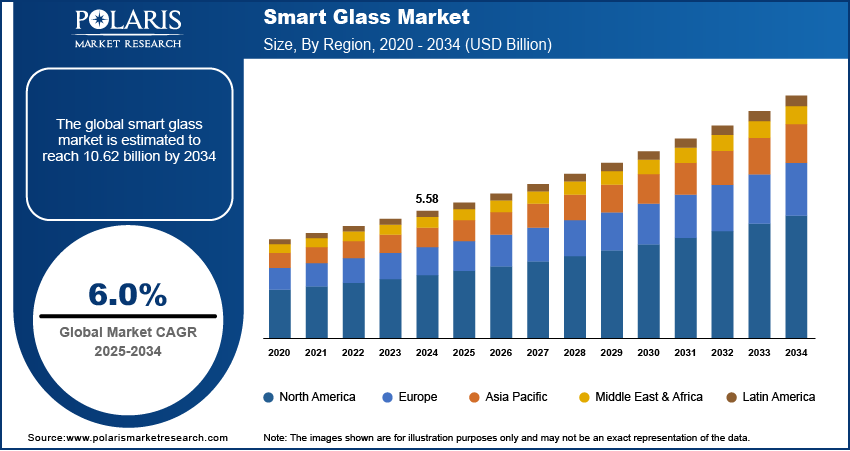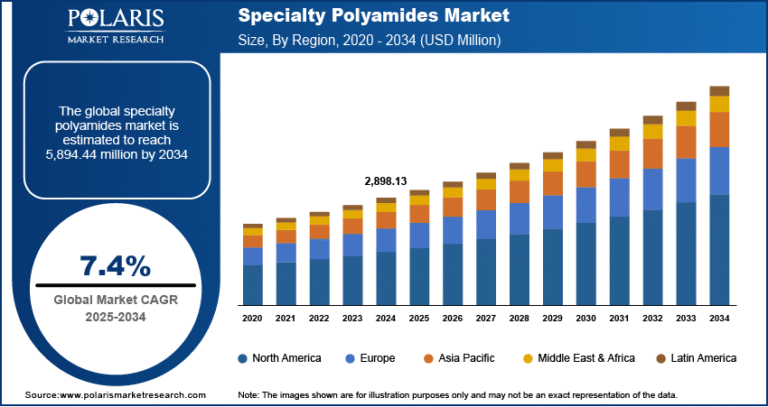Smart Glass Market Size Worth USD 10.62 billion by 2034 | CAGR: 6.0%

The global smart glass market is poised for stable growth over the next decade, driven by rising demand for energy-efficient building solutions, advancements in glass technology, and increased adoption in automotive, construction, and aerospace industries. According to recent industry research, the smart glass market was valued at USD 5.58 billion in 2024, is projected to reach USD 5.95 billion in 2025, and is expected to grow to USD 10.62 billion by 2034, exhibiting a compound annual growth rate (CAGR) of 6.0% during the forecast period from 2025 to 2034.
Market Overview
Smart glass, also known as switchable glass or dynamic glass, offers the ability to control light, heat, and glare by changing its properties in response to external stimuli such as electricity, light, or heat. It is increasingly being adopted in commercial buildings, residential properties, automobiles, and aircraft due to its ability to enhance comfort, privacy, energy efficiency, and aesthetic appeal.
The growing emphasis on sustainable building practices, government regulations promoting energy-efficient solutions, and rapid urbanization are among the key factors propelling market growth.
Request Free Sample:
https://www.polarismarketresearch.com/industry-analysis/smart-glass-market/request-for-sample
Key Market Trends
-
Increasing Adoption in Smart Buildings: The integration of smart glass in commercial and residential construction projects is enhancing energy efficiency and occupant comfort.
-
Automotive Sector Driving Demand: Smart glass is increasingly used in sunroofs, windows, and windshields for privacy, UV protection, and glare reduction.
-
Growing Popularity of Electrochromic Glass: Electrochromic smart glass technology is gaining traction for its ability to offer dynamic shading and energy savings.
-
Focus on Energy Conservation: Building owners and developers are investing in smart glass to reduce reliance on HVAC systems and lower energy consumption.
-
Technological Advancements: Innovations in materials and manufacturing processes are improving smart glass performance, durability, and affordability.
Market Size & Forecast (2025–2034)
-
2024: USD 5.58 billion
-
2025: USD 5.95 billion
-
2034: Estimated to reach USD 10.62 billion
-
CAGR (2025–2034): 6.0%
Key Market Opportunities
-
Rising demand for energy-efficient and sustainable building solutions globally.
-
Increasing use of smart glass in electric and luxury vehicles.
-
Expanding applications in aviation, marine, and healthcare sectors.
-
Technological advancements reducing production costs and improving product quality.
-
Government initiatives promoting green building technologies.
Market Scope
The smart glass market includes various technologies such as electrochromic, thermochromic, photochromic, and suspended particle device (SPD) glass, catering to applications in architecture, automotive, aerospace, and consumer electronics.
North America and Europe currently lead the market, driven by stringent energy regulations and high adoption of smart building technologies. The Asia-Pacific region is expected to witness rapid growth, fueled by urban development, smart city projects, and increasing demand for advanced building materials.
As the global push for energy efficiency, comfort, and smart living continues, the smart glass market is set to play a pivotal role in shaping the future of modern infrastructure and mobility.






![Sun Care Cosmetics Market Analysis: Opportunities, Innovations, and Growth Potential Through [2025-2034]](https://beeswire.com/wp-content/uploads/2025/07/polaris-66-768x768.png)